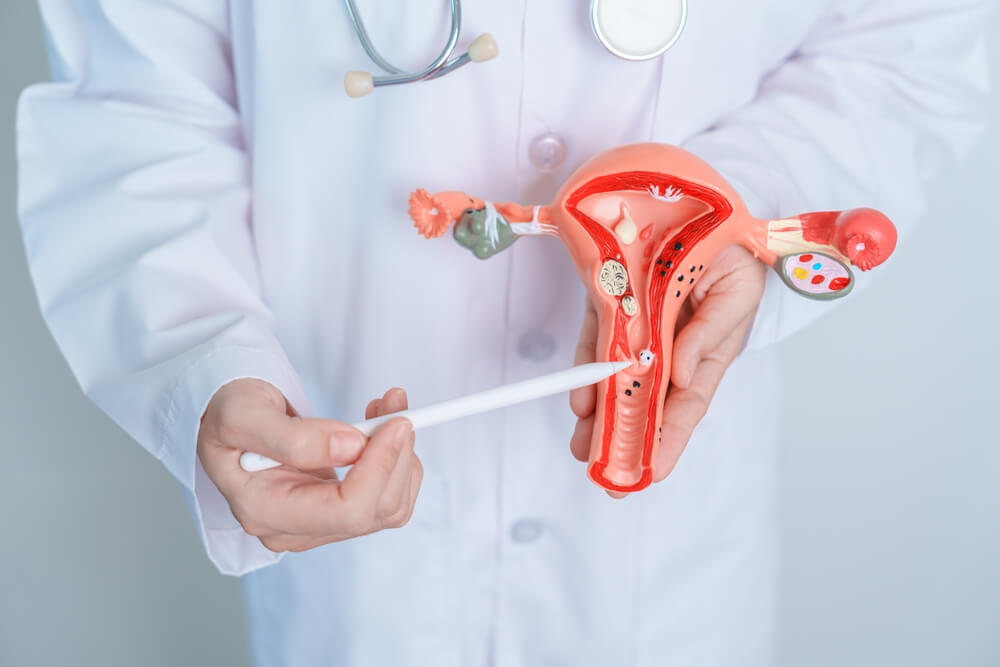Uterine fibroids, though benign, can wreak havoc on a woman’s health and quality of life. Fortunately, advancements in medical science offer effective solutions, with fibroid removal surgery or myomectomy emerging as a leading choice for many women seeking relief from the symptoms and complications associated with these pesky growths.
Different medical centers offer the service of removal of uterine fibroids so patients have plenty to choose from when we are speaking about hospital procedures in Fort Lauderdale, FL. In order to choose carefully and cater to their personal needs, patients need to do thorough research and pick the most suitable place to undergo medical treatments. Clinics such as Serene Health OBGYN & Wellness have dedicated teams of experienced surgeons specializing in fibroid removal surgery, and they prioritize patient well-being above all else. From cutting-edge techniques such as laparoscopic myomectomy to personalized care plans tailored to each individual, Serene Health ensures that every patient receives the highest standard of treatment in a supportive and nurturing environment.
Understanding Uterine Fibroids
Understanding uterine fibroids is essential for women’s health and well-being. These non-cancerous growths, also known as leiomyomas or myomas, develop within the muscular walls of the uterus and can vary greatly in size and location. While some women may experience no symptoms at all, others may suffer from heavy menstrual bleeding, pelvic pain, pressure on the bladder or rectum, and even fertility issues.
Although the exact cause of fibroid development remains unclear, factors such as hormonal imbalances, genetics, and environmental influences may play a role. Awareness of the symptoms and risk factors associated with uterine fibroids empowers women to seek timely medical intervention and explore treatment options tailored to their individual needs.
The Need for Myomectomy
When uterine fibroids start causing significant discomfort or interfere with a woman’s reproductive health, medical interventions such as fibroid removal surgery become necessary. Myomectomy, the removal of uterine fibroids while leaving the uterus intact, stands as a pivotal treatment option. Unlike hysterectomy, which involves removing the entire uterus and is often considered a last resort, myomectomy preserves fertility, making it particularly appealing to women who wish to retain their reproductive capabilities.
Exploring Myomectomy Techniques
There are several approaches to performing a myomectomy, each with its advantages and considerations. Here are the offered options:
- Laparoscopic Myomectomy: Also known as minimally invasive fibroid removal surgery, this technique utilizes small incisions through which a laparoscope and tiny surgical instruments are inserted. It offers advantages such as less postoperative pain, smaller scars, shorter hospital stays, and quicker recovery times compared to open surgery.
- Robotic-Assisted Myomectomy: In this approach, a surgeon controls robotic arms equipped with surgical instruments to perform the procedure through small incisions. This technique allows for enhanced precision and maneuverability, potentially reducing surgical complications and improving patient outcomes.
- Hysteroscopic Myomectomy: Suitable for fibroids that protrude into the uterine cavity, this technique involves removing fibroids using a hysteroscope inserted through the vagina and cervix. It is typically reserved for smaller fibroids and may be performed on an outpatient basis with minimal recovery time.
Laparoscopic Myomectomy: A Minimally Invasive Alternative
Laparoscopic myomectomy, also known as minimally invasive fibroid removal surgery, has gained popularity in recent years for its ability to achieve comparable outcomes to open surgery with fewer risks and a speedier recovery. This technique utilizes small incisions through which a laparoscope, equipped with tiny surgical instruments, is inserted to locate and remove the fibroids.
Not only does laparoscopic myomectomy result in less postoperative pain and scarring, but it also allows for a shorter hospital stay and quicker return to normal activities.
The Surgical Process
Prior to undergoing myomectomy, patients will typically undergo a thorough evaluation, including imaging studies such as ultrasound or MRI, to assess the size, number, and location of the fibroids. This information helps the surgical team determine the most appropriate approach and plan the procedure accordingly.
On the day of surgery, patients are placed under general anesthesia to ensure comfort and safety throughout the operation. Once the patient is asleep, the surgeon makes several small incisions in the abdomen to access the uterus. Using specialized instruments and the guidance of the laparoscope, the fibroids are carefully dissected from the surrounding tissue and removed. In some cases, additional techniques such as morcellation may be employed to facilitate the extraction of larger fibroids through small incisions.
Recovery and Aftercare
Following myomectomy, patients can expect to spend a brief period in the recovery area before being discharged home the same day or the next day, depending on the complexity of the procedure and individual recovery progress. While discomfort and fatigue are common in the days following surgery, most patients find relief with pain medication and rest. Here are some additional tips:
- Pain Management: Patients are prescribed pain medications to manage discomfort in the immediate postoperative period.
- Rest and Recovery: Adequate rest is essential for promoting healing and minimizing postoperative complications. Patients should avoid strenuous activities and heavy lifting for several weeks following surgery.
- Wound Care: Proper care of surgical incisions is crucial to prevent infection and promote healing. Patients are instructed on how to keep the incision sites clean and dry and when to seek medical attention for signs of infection.
- Follow-up Appointments: Patients typically have follow-up appointments with their surgeon to monitor recovery progress, address any concerns, and discuss further treatment options if necessary.
- Activity Restrictions: Patients are advised to avoid activities that could strain the abdominal muscles or disrupt the healing process, such as vigorous exercise, lifting heavy objects, or sexual intercourse, for a specified period.
- Dietary Considerations: A healthy diet rich in fruits, vegetables, lean proteins, and whole grains can support the healing process and overall well-being. Patients may also be advised to drink plenty of fluids and avoid constipation, which can increase discomfort during recovery.
- Monitoring for Complications: While rare, complications such as excessive bleeding, infection, or adverse reactions to anesthesia can occur following myomectomy. Patients are educated on the signs and symptoms of potential complications and instructed on when to seek urgent medical attention.
- Patience and Self-care: Recovery from myomectomy takes time, and every individual heals at their own pace. Practicing patience, self-care, and maintaining open communication with healthcare providers can help ensure a smooth and successful recovery process.
Conclusion
In conclusion, myomectomy offers a safe and effective means of addressing the symptoms and complications associated with uterine fibroids while preserving fertility and reproductive health. Whether performed through traditional open surgery or the less invasive laparoscopic approach, fibroid removal surgery can provide much-needed relief and improve the quality of life for countless women worldwide.
Myomectomy stands as a beacon of hope for women grappling with the burdens imposed by uterine fibroids, offering a path toward a brighter, healthier future, so make sure you contact us today and speak to our experts!


